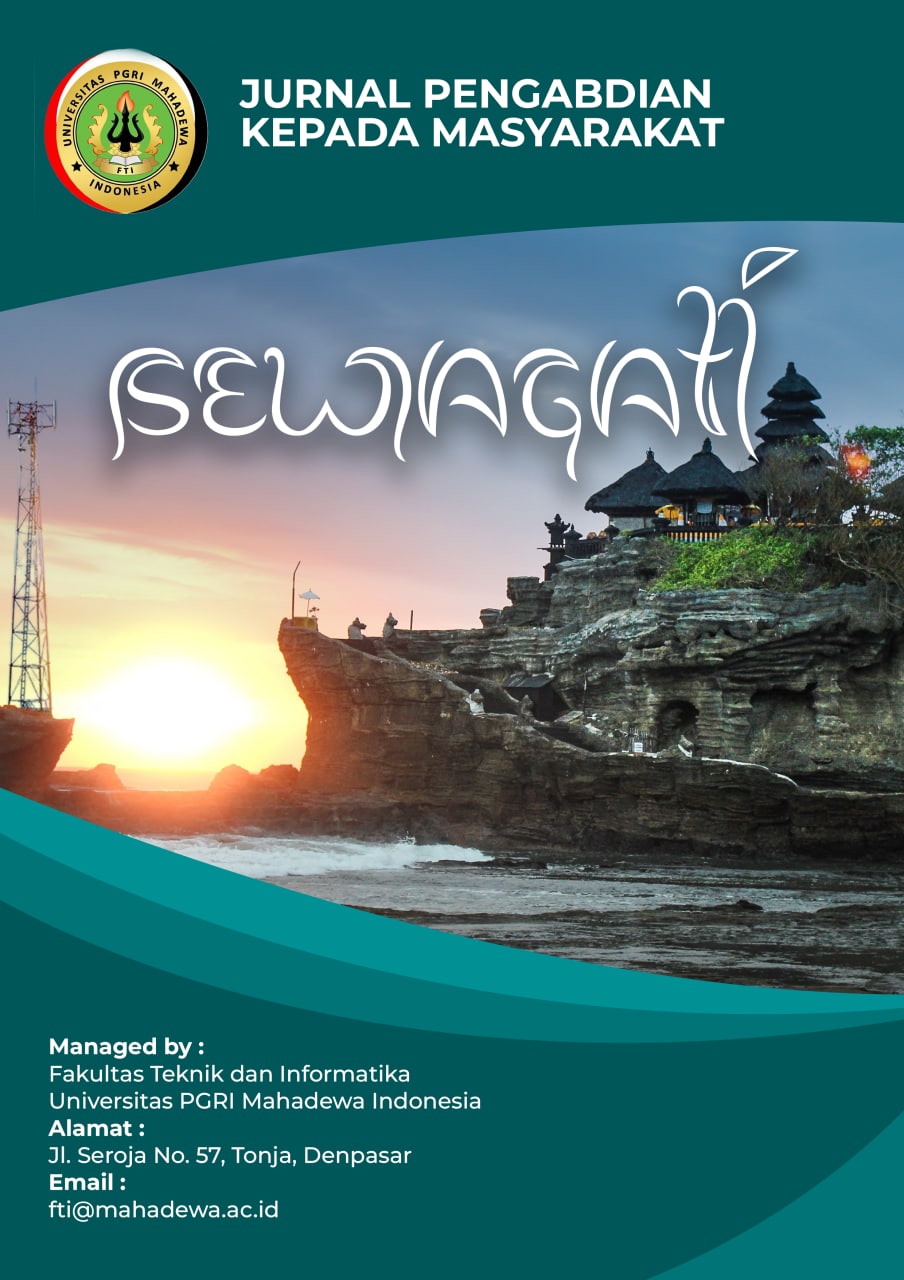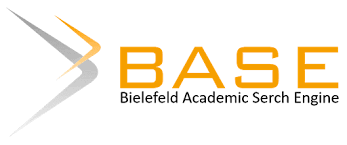PEMANFAATAN LAHAN TIDAK PODUKTIF DI DESA PESANGGRAHAN BATU UNTUK BUDIDAYA MELON DAN KALE MENGGUNAKAN METODE HIDROPONIK RAKIT APUNG
DOI:
https://doi.org/10.59819/sewagati.v3i2.4112Keywords:
hydroponics, floating raft, greenhouse, kale and melonAbstract
Pesanggrahan Village is one of the villages located in Batu District, Batu City. Geographically, this village is located on the slopes of Mount Pesanggrahan. The residents of this village have their main livelihoods as cattle breeders and vegetable farmers. The vegetables that are often planted are chilies, tomatoes, mustard greens, lettuce, spring onions, eggplants, and cucumbers. The method used to plant these vegetables is still traditional, namely by planting directly in the soil or plantation land. This community service activity was carried out based on situation analysis and discussions with the RT head and the PKK mothers' group of Pesanggrahan Batu village. This activity aims to overcome various problems such as unproductive land, low income of PKK mothers' families, lack of knowledge of hydroponic plant cultivation, and knowledge of post-harvest fruit handling and marketing. This activity involved 14 KKN students to utilize idle land in the Pesanggrahan Batu area in order to produce vegetable products that are beneficial to the local community. so that the requirements for clean water have been met.
Downloads
References
Atmaja, D.M. (2019) “Analisis Kualitas Air Sumur Di Desa Candikuning Kecamatan Baturiti,” Media Komunikasi Geografi, 19(2), hal. 147. Tersedia pada: https://doi.org/10.23887/mkg.v19i2.14644.
Loniza, E. dan Syabani, I. (2019) “Portable Turbidimeter Dilengkapi Penyimpanan Data Berbasis Arduino,” Medika Teknika : Jurnal Teknik Elektromedik Indonesia, 1(1). Tersedia pada: https://doi.org/10.18196/mt.010103.
Monica, D. (2021) “Pengukuran Nilai Kekeruhan Air Pdam Tirta Keumuening Kota Langsa,” Jurnal Hadron, 3(1), hal. 19–22. Tersedia pada: https://doi.org/10.33059/jh.v3i1.3744.
Mukhlisin.Ahmad (2020) “Analisis Pengolahan Air Terproduksi Pada Water Treatment Plant Dengan Menggunakan Media Filtrasi Pasir Silika, Walnut Dan diperoleh data TDS sebesar 290 ppm, kandungan Cl sebesar 0,02 %, nilai pH adalah 8 dan EC sebesar 578 μs/cm.Karbon Aktif Dari Sabut Kelapa,” hal. 62.
Rosariawati, F., & Mirwan, M. (2013). Efektivitas PAC dan Tawas untuk Menurunkan Kekeruhan pada Air Permukaan. Envirotek: Jurnal Ilmiah Teknik Lingkungan, 5(1).
Sukartini NM ( 2016) Akses Air Bersih di Indonesia. Jurnal Ekonomi Kuantitatif Terapan, 9(2):89-98.
Wirman, R.P., Wardhana, I. dan Isnaini, V.A. (2019) “Kajian Tingkat Akurasi Sensor pada Rancang Bangun Alat Ukur Total Dissolved Solids (TDS) dan Tingkat Kekeruhan Air,” Jurnal Fisika, 9(1), hal. 37–46. Tersedia pada: https://doi.org/10.15294/jf.v9i1.17056.
Wandari, Mellyana & Jati, Elisabeth & Holeng, Vera & Ma’ruf, Syamsul & Rahmawati, Dwi & Jabbar, Abdul & Ridho Fariz, Trida. (2023). Keberlanjutan Sistem Penyediaan Air Bersih Berbasis Masyarakat di Kota Semarang. Jurnal Teknologi Lingkungan Lahan Basah. 11. 408. 10.26418/jtllb.v11i2.61103.
Yaqin, R. I., Ziliwu, B. W., Demeianto., Siahaan, J. P., Priharanto, Y. E., & Musa, I. (2020). Rancang bangun alat penjernih air portable untuk persediaan air kota Dumai. Jurnal Teknologi, 12(2), 107 - 116.
Downloads
Published
Issue
Section
License
Copyright (c) 2024 Yatim Lailun Ni’mah, Suprapto Suprapto, Harmami Harmami, Grasianto, Fredy Kurniawan, Ita Ulfin, Kartika Anoraga Madurani, Hanson Salim, Reiza Arya Ardhana, Anastacia Jingga Martissa, Fikriyatus Sofi, Melvi Yanifa Maharani, Anifatul Ummah, Ergan Pranata

This work is licensed under a Creative Commons Attribution-ShareAlike 4.0 International License.
Authors who publish with the Jurnal Sewagti agree to the following terms:
1. Authors retain copyright and grant the journal the right of first publication with the work simultaneously licensed under a Creative Commons Attribution License (CC BY-SA 4.0) that allows others to share the work with an acknowledgment of the work's authorship and initial publication in this journal.
2. Authors are able to enter into separate, additional contractual arrangements for the non-exclusive distribution of the journal's published version of the work (e.g., post it to an institutional repository or publish it in a book), with an acknowledgment of its initial publication in this journal.
3. Authors are permitted and encouraged to post their work online (e.g., in institutional repositories or on their website) prior to and during the submission process, as it can lead to productive exchanges, as well as earlier and greater citation of published work. (See The Effect of Open Access) .




















